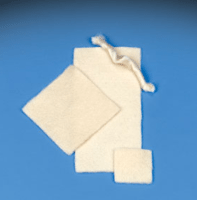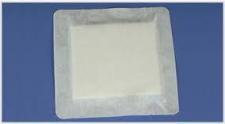The Continuum of Wound Care Dressings- Alginates and Composite Dressings
Continuing our review of dressings and their unique characteristics, let’s look at two other dressing types: alginates and composite dressings.
Alginates
Alginates are made from specific types of brown seaweed which contain alginic acid salts converted into sodium/calcium salts. They may be woven or nonwoven and look similar to cotton. These dressings, when placed in the wound bed, reacts with wound serum and any exudate present to form a gel. This gel creates a moist wound environment; it also works to trap bacteria, which can then be washed away when the wound is cleansed. The gel should not be confused with infection.
Because alginates are nonocclusive and are highly permeable, a secondary dressing will be necessary. Gauze is often used for this purpose. Alginate dressings come in several forms: sheets, which can be placed on wound beds to absorb moisture; ropes, which can be used to fill areas of undermining or tunneling; and alginate-tipped applicators that can be used to probe and measure wounds and are less likely than cotton-tipped applicators to cause an inflammatory reaction if any wisps are left behind.
Indications
Alginate dressings can be used on:
• highly exudative wounds (can absorb up to 20 times their weight in fluid)
• venous insufficiency ulcers
• pressure ulcers
• diabetic (neuropathic) ulcers
• burns (partial and full-thickness)
• infected wounds
• granular and slough-covered wounds
Alginate dressings used in cavity wounds have been found to be cheaper, require fewer dressing changes and cause less pain than gauze packing strips.
Precautions
Due to the high absorbency of these dressings, alginates should not be used on relatively dry wounds, such as third degree burns, nor should they be used when underlying structures such as bones, tendons or ligaments are exposed. In addition, intact skin should be protected from maceration using skin sealants or moisture barriers.
Composite Dressings
Composite dressings, sometimes called combination or compound dressings, are dressings composed of more than one layer (most have 3 layers). They may be used as a primary dressing or as a secondary wound dressing. The innermost layer is a non-absorbent layer designed to prevent damage to the wound bed during dressing changes. The middle layer is comprised of material that wicks moisture away from the wound bed to maintain a moist wound environment and prevent maceration (usually an alginate, foam, hydrocolloid or hydrogel material). The outermost layer is typically a semipermeable film which prevents bacteria from entering the wound. Although these dressings may be convenient to use in some cases, they are also very expensive. It is far more cost-effective to use individual dressings that serve the appropriate purpose. Theses dressings represent an ever growing segment of the market.
If you are enjoying this series on wound care products, you may consider becoming certified as a wound care professional. Wound Educators is the premier online wound education site, preparing professionals to become nationally certified. If you would like to learn more about becoming a certified wound care professional, please contact us.
Sources
Meyers, B (2008). Wound Management: Principles and Practice. 2nd edition. Pearson Prentice Hall. Upper Saddle River, New Jersey. pg. 128-130.
Alginates. Wound Care Information Network. http://www.medicaledu.com/alginahp.htm



Great to know about brief description of different dressings. Earlier I used any one of them, which was easily available, but now I’ll be more careful and use dressing according to the type of injury.